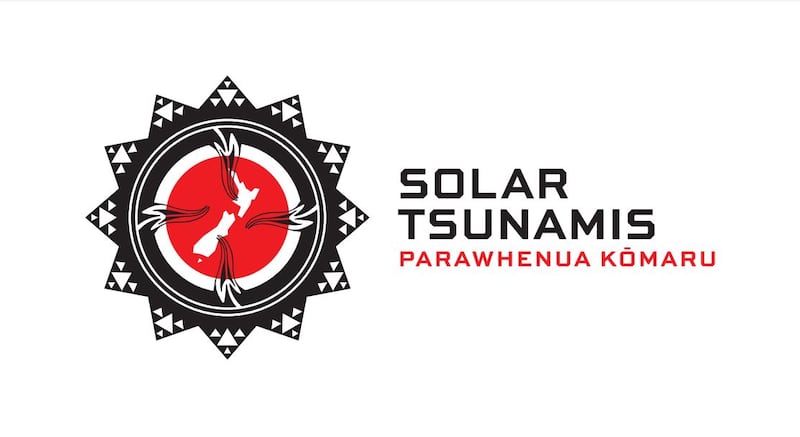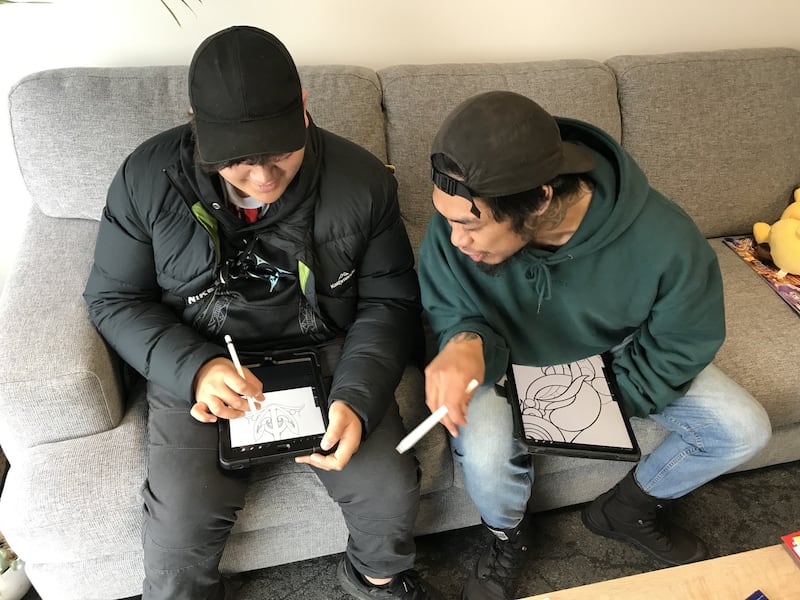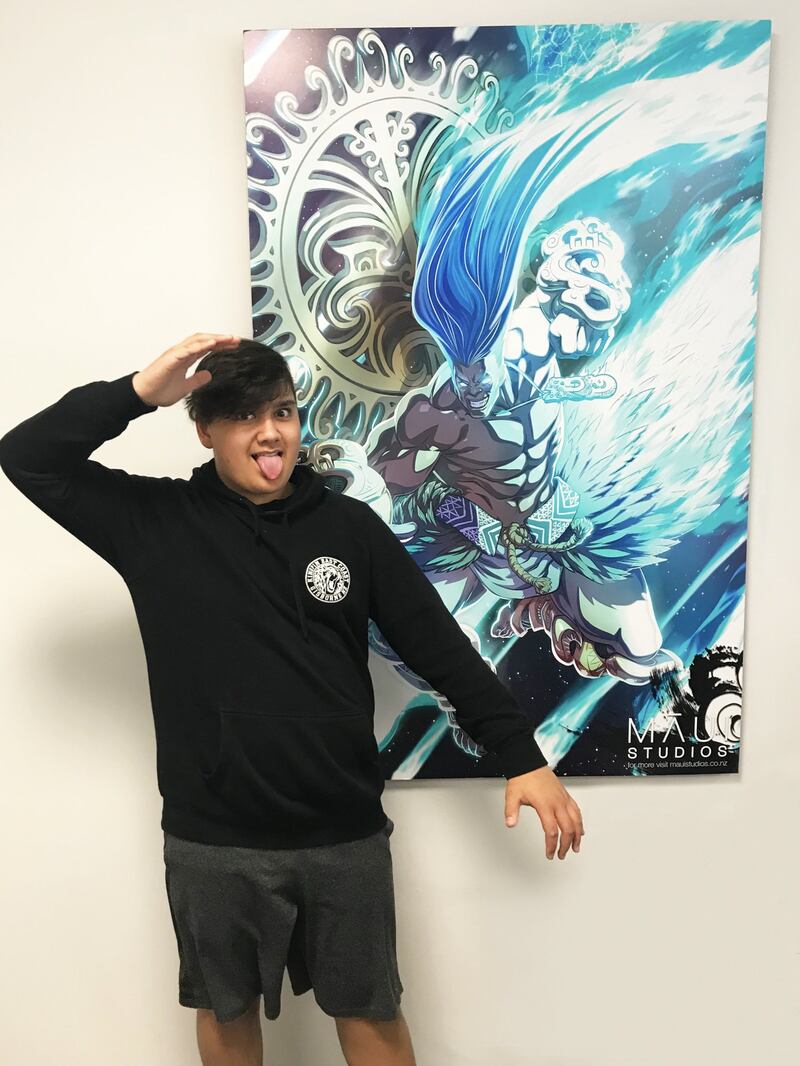Gisborne kura kaupapa student Maikel Terekia is being celebrated for creating the winning logo for Otago Museum’s Solar Tsunami Project.
Today the museum launched the project, which involves researchers looking into how New Zealand might be impacted by a solar tsunami, a large-scale solar corona shock wave generated by solar flares.
Terekia, 13, is a student from Te Kura Kaupapa Māori o Horouta Wānanga in Gisborne.
His logo represents Tamanuiterā (the sun) both embracing and engulfing Papatūānuku (the earth mother).
“The red, black and white colour scheme represents our tino rangatiratanga in New Zealand. The mangopare (hammerhead shark design) covering Aotearoa represents the hononga (connection) between Tamanuiterā and Papatuānuku. Last but not least the tapatoru (triangles) that are surrounding my logo, represent our pūrakau (stories) that we can use to whakaahuru our people if there were to be an upcoming solar tsunami,” Terekia says.

Logo designed by Maikel Terekia. Source: Otago Museum
Māui Studios
As part of his prize, he won a solar telescope for his kura and was flown to Māui Studios in Christchurch for a two-day workshop to create the final version of the logo and to learn more about a career in digital media.
“I learned how they could tell our stories to anyone around the world and we learned that there’s actually more than one way to share our pūrakau through social media, filming, comic books, VR (virtual reality), so many things.”
His dad, Brandon Terekia says his whānau is proud of him.
“He’s a pretty special kid, pretty talented and for him to take the advantage of this opportunity was just unreal," Brandon says.
Brandon says it was an awesome opportunity for the kids at the kura to get involved in the competition.
“It gave them the opportunity to tell their story their way and from their specific perspective. And because they’re all kura kaupapa kids it’s good to provide them with the opportunity to find value in all the tikanga and the karakia and the whakapapa that’s just every day for them.”

Terekia during his visit to Maui Studios. Source: Otago Museum.
Māui Studios co-founder Patrick Hussey says they were privileged to be invited to work on this project.
“We are really happy to be giving back to the next generation – especially to young Māori designers. This is part of our kaupapa, to give back. This was a direct opportunity to do that.”
The leader of the project was outreach project lead Toni Hoeta.
“Maikel is so talented and we just loved his design. I hope this will be the start of his design career. It is a perfect way to represent what we are doing to New Zealand and to the world.”
Terekia says he wants to pursue graphic design and enjoys drawing kowhaiwhai and tāmoko the most.
“I would really like graphic designing to be one of the ways I could share my stories to everyone in the world, just like Māui Studios,” he says.

Terekia during his visit to Maui Studios. Source: Otago Museum.
Solar Tsunami Project
The launch of the Solar Tsunami Project today also marks the anniversary of the Carrington event, the first documented major solar tsunami which occurred in 1859. It was a solar flare with the estimated energy equivalent of 10 billion atomic bombs.
During this event, telegraph operators could disconnect from batteries and still transmit electrical signals (the taps that create Morse code), because the atmosphere was so charged, platinum contacts were nearing the melting point and "streams of fire" poured from the circuits.
The problem now is global but the issue needs to be resolved locally because geomagnetism doesn’t follow geography, and countries run their power grids differently, so research done in the US, for example, won’t be accurate in Aotearoa.
Hoeta says, on a more dangerous scale, the solar flares could cause a large hit of charged particles to interact with the earth’s magnetic field.
“They could get into the magnetic field and disrupt the electrical grid of New Zealand. So part of this project is finding a way to mitigate this intense process so that we are prepared for the effects of it.”
Hoeta says the charge particles could get into the atmosphere and melt power transformers, thus causing a power outage. Therefore anything that relies on electricity would turn off, such as lights, phones, hot showers and toilets that require electricity to flush.
“We’re so reliant on electricity these days that pretty much we’d go back to the old days,” she says.
Hoeta says scientists aren't sure when a solar tsunami could next hit.
"This is just the beginning of the project. We’ll find out as the years go on and then we’ll communicate that to the public."
